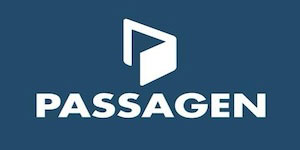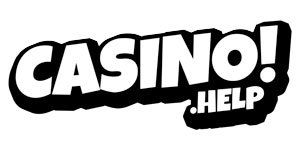Comics Interview: Dissected – Issue #2
Welcome to this brand-new feature here on Nerdly, where one of our comic gurus, Ian Wells, delves into comics history and dissects Comics Interview, the long-running journal of interviews and criticism from David Anthony Kraft.

Up Front With DAK
From this point forward I will be referring to David Anthony Kraft as DAK. He kicks things up this month by saying how well-received the first issue was. So well received in fact that starting with this very issue Comics Interview will be going monthly! The new monthly schedule will result in some fine-tuning issue by issue for what articles appear. One idea he has already is to have colourists and letters rotate month to month. In this issue the Mark Evanier interview doubles up as writer and editor feature, also an inker interview is absent. DAK makes the point to say everyone working on CI with him is doing so ‘after hours’ they are all working in comics on day to day basis. For them then it is very much a passion project, a place to spread the enjoyment of comics, it can be likened to today where you get comics pros hosting podcasts or YouTube series to not only promote their work but their love of all things comics. It is a very short but sweet Up Front this time around and the overriding feeling from it is DAK continually expressing how much fun he is having.
Credits
There are a few additions this time mainly due to DAK dividing up the workload on conducting the interviews. In this issue, we have previous interviewee Steve Gerber, newcomer Liam Chadwyck and Mark Gruenwald. Martha Conway joins the ranks as a transcriber. Conway worked as a secretary to Stan Lee in 1978. The only return on Google for this was a picture some had posted of a letter they received from her saying they could use the enclosed Spider-Man daily original art in an upcoming art exhibition. Google was no help with Chadwyck and of course Gruenwald knows no introduction. One of the most popular faces in comics, a true nice guy. A writer who can count a ten-year run on Captain America and the Squadron Supreme among his top credits. Perhaps though he is best known for being the creator of The Official Handbook of The Marvel Universe in 1982.
Miller Time
Frank Miller’s last issue of Daredevil had hit the stands in February 1983. He had taken an at best C list character and had him stand shoulder to shoulder with big hitters like Spider-Man and The X-Men. In the process he had become one of comics’ hottest creators, a number of projects had failed to get off the ground at Marvel during the ’80s so it was time to freshen things up at DC with the freedom of a creator-owned series. Miller says how the seeds for Ronin were planted during research for Daredevil. His editor Denny O’Neil stressed the importance of research to establish a real fighting style for DD and Miller found himself immersed in Samurai culture. The amount of research he did is evident in the extent of his answers where he is able to talk eloquently about samurai philosophy and ethics. But we are here for comics talk right? He describes Ronin as a man on an adventure rather than a superhero story, he doesn’t want people to compare it to Daredevil. There is some interesting process talk, as he discusses his line work. After working for so long with Klaus Janson on Daredevil he is now pulling double duties on pencils and inks. While he points to Lone Wolf and Cub artist Goseki Kojima as an influence but says he isn’t imitating him. Ronin was to be printed on a higher-quality paper to the usual DC output. Miller found that this led to a change in his style. “The heavy blacks and bold outlines produce too slick a look for good paper… We have to soften our image because the resolution is so fine.” He says Janson and Terry Austin highlighted how important the inking stage was and now everyone else is catching up. Miller admits to still working full script, then doing layouts on type-writer paper. The preview art that accompanies the interview makes me long for a black-and-white version of Ronin, it looks really stripped back, but amazing. The first time I read Ronin I didn’t care for the art much, I found it muddled. A black-and-white version would be really crisp and in my opinion not detract from the story. There is some Daredevil talk for fans of ‘ol Hornhead. He calls #191 his best and I don’t think many fans would disagree with him. In fact some of the art style we would see in Ronin is present in this issue. I was surprised to see him describe his time on Daredevil as chaotic, which he says would not see him return to the character. While Miller admits to having read nothing but samurai books for two years he drops some recent comics likes and it is all far removed from the mainstream bubble Moebius, Bilai and Daumier. He has admiration for Walt Simonson, but he says he should ink himself. He closes by saying he doesn’t want comics to become inbred, with the line between creators and audience blurred. “We ourselves are not the product. The only thing we should sell is the story.”
New Gods: The Truth
Jack Kirby’s New Goods for DC ended in 1979 after only 12 issues. If you haven’t read them, what I have to say about Comics Interview #2 can wait. Go and read them! Mark Evanier the subject of this interview would go on to write a third volume of New Gods in 1986 so I am sure CI will be there to cover that in the future. The conversation kicks off with a talk about Evanier’s early days in LA. Like how he was the president of his local comic club. I’m guessing some of the other members would be the faces who started the San Diego Comic-Con. I wonder if in this day and age there are still physical, face-to-face comic clubs or if the internet has all but put an end to them? He worked for Marvel Mania International who distributed posters. The use of Kirby’s art on these posters put him into contact with The King and he would eventually end up working as his intern. Despite New Gods finishing four years prior to this interview Evanier uses the space to take the reader behind the scenes on that seminal work. I think a lot of this is common knowledge today, but at the time it must have felt like juicy gossip. Kirby was lured to DC under a lot of false pretences and editorial input greatly affected his time on his sprawling saga. For example, the original plan was to hand the reigns of Mister Miracle over to Steve Ditko, an idea kicked into touch by Carmine Infantino. The very same editor then wanted to force Deadman into the series to piggyback on the popularity of Kirby and his new creations. Talk turns to the creative process between himself and Kirby. Kirby was able to provide him with some of Stan Lees’s old Fantastic Four plot outlines, which helped in establishing a working dynamic. Some fans have theorized New Gods was good because Evanier wrote it. He clarifies this is not the case and discusses the division of labour across New Gods, Mister Miracle and Jimmy Olsen. This leads into how he views the Lee/Kirby argument when it comes to who created what, saying there is a discrepancy in the relationship over the term ‘writing.’ The screenwriter William Goldman says he doesn’t like actors ad-libbing, but a writer’s most important contribution is structure. So working ‘Marvel Method’ structure was very much down to Kirby. As for current comics again echoing the last issue, Evanier like Gerber says comics are still like they were in the ’60s. He believes for example Fantastic Four still sells purely off the back of the old Kirby and Lee magic. At some point all the old stories and characters will be revisited. He doesn’t pull his punches on writers or artists either. The former has a much easier route into the mainstream compared to when his peers were breaking in. He uses Marv Wolfman and Len Wein as two writers who came in the hard way. Newer artists in the field are blending the best of Kirby, Romita and Neal Adams but aren’t actually bringing anything new to comics. An argue that many would say still holds weight today. What I like about Evanier is that he turned his fandom into a tangible career in comics. It is why I enjoy reading about the history of comics, while people would say it wasn’t any easier to break in, in the ’60s to the ’80s it was certainly more accessible. While today social media is a strong tool in the arsenal for up-and-coming creators, it is certainly more of a closed shop when it comes to other areas like comics.
Artistic Licence
Will Meugniout was not a name known to me before reading this, nor was the series he is talking up here DNAgents. It is a series from Eclipse which had an initial run of 24 issues, twelve of which were penned by Mark Evanier (CI connection, he also joins the interview halfway through). Will Meugniout had previously worked on newspaper strips for Marvel as well as Marvel Chillers where he done a Tigra story. He has mainly been working in animation which puts him in connection with Steve Gerber who is conducting the interview and carries on the animation-heavy influence from #1. His animation career also touched with Marvel working on both Hulk and Spider-Man series, as well as storyboarding for Lone Ranger and Flash Gordon. The draw has always been comics and he now feels creator-owned work is the route to go. The obvious appeal of doing your own independent comic is retaining the rights. He says currently at DC if you create a character the split is 80/20 in their favour and that 20% is shared between writer and artist. For those aspiring artists picking up Comics Interview back in the day hoping to pick up some tricks of the trade, there is absolutely no shop talk in this interview. Once Evanier joins the conversation it very much becomes about selling DNAgents. I would even say that isn’t done particularly strongly, although the camaraderie between the three makes for a good read. They go out of their way to say how it is different from any other teen team book, citing both X-Men and Teen Titans as examples. I would counter by saying that by 1983the main X-Men series was not a teen book, with only Kitty Pryde in their ranks. New Mutants would have been a better argument, but even that differed from the main X-series so how different can DNAgents be? I did find it interesting how Meugniout wanted to inject his own experiences into the series. Having left his small home town to embark on a career in LA, is likened to the teen team being thrust into the real world. He also says how when he started his career meeting the big names in animation were reality check moments for him and he wants the DNAgents to react to the real world the same way.
Colour Commentary
By 1983 I think it is fair to say George Roussos is one of the older heads in comic colouring, a near legend if you will. Last issue the colourist interview was with up-and-comer Steve Oliff so it provides a nice contrast this time around to go with a more seasoned pro. Gruenwald wastes no time diving straight into origin story stuff and I love it! Roussos began his comics career with Ripley’s as a letterer on Spanish syndicated strips, which is a long way away from being the go-to cover artist for an eleven-year period at Marvel. Out of school he was the second person to work for Bob Kane on Batman, him and Jerry Robinson would turn out 13 pages a week! Later at DC her worked on a 7 page backup in Action Comics called Airwave where he wrote, pencilled, inked, coloured and lettered it! If it had come out in ’83 he could have filled any of the slots in Comics Interview! On the current state of the industry, Roussos believes writers can be said to be too superficial. “They begin writing outside of a comics reading audience.” You can just imagine if he said that on Twitter today all the fans nodding in agreement with their “Captain America is too political.”! I think that is going to become a theme of these revisits and how what was said then would translate to the social media age of comics fandom. Roussos says he is self-taught as a colourist and has taken things from Robinson, Bill Finger and Stan Lee to put into his work. His biggest admiration as a fan is for Chester Gould. “Dick Tracy is simple… yet he could do anything within its guidelines. It had an understanding of the comics medium.” As for the artists working today who he admires, he names checks Tom Palmer, Walt Simonson and Bob Layton. Is number one lesson on the philosophy of colouring is that the background colours are to emphasize the emotion of a situation to the reader. As a colourist he wants to work from one extreme of the spectrum to the other. He ends by saying if he could repeat his life all over again he would choose a career in comics!
View From The Top
When I saw Gary Brodsky’s name on the cover I assumed he was here to talk all things Solson. Turns out I was three years too early! Instead here is talking about his first steps into publishing with his company Garco. One of the books published by Garco was Illustrated Comic Art Workshop Vol.1. A second volume has been advertised heavily in both issues of Comic Interview thus far and Brodksy says more volumes are on the way. I had a look online and couldn’t find any more after the first two. He gives us the inside scoop on what makes Volume 2 bigger and better, mainly the driving force of Dick Giordano and John Romita. This time around Garco is able to use licensed characters within the book, as well as old syndicated strips and having John Byrne onboard always helps. The future of Garco is to publish more comic adjacent books including editions dedicated to certain artists. He also teases Garco Comics coming that very April. Again an online search turned up nothing, so I wonder if the plans were shelved and eventually became Solson. I’m sure the pages of Comics Interview in the future will hold the answers.
Ad Space
Of course, Illustrated Comic Art Workshop Volume 2 gets a big ad page on the inside cover. Highlights include a new collection of Spirit stories in a colour hardcover for only $13.95. Compare that to today’s hardcover market! #3 of Gruenwald’s fanzine Omniverse also gets the full-page treatment. Omniverse sounds amazing as it is a fanzine dedicated to the subject of continuity, but boy those things are expensive on eBay. I also believe I found evidence of early signs of the spectator boom of the ’90s. There is an ad for Once a Month Productions in Albany. They have a list of very affordable back issues, all of which would be considered ‘keys’ today, but what struck me most was the headline at the top of the ad restricting purchasers to 5 copies per customer.
“I wanted to be Jack Kirby” – Gene Simmons
I have to be honest and say if I was picking this up in 1983 I would probably have skipped over this interview, skimmed it at best. Which is what I did now. To clarify I don’t have anything against the music of KISS or people who like KISS. It is just to me Simmons is an egotistical idiot. While I read his answers as somewhat aloof, like he is better than your average Wednesday Warrior he certainly has strong comic fan bonafides. He has a strong devotion to the Lee and Kirby era of Marvel Comics, saying he had never been into comics until Amazing Spider-Man #1. The fact that he still likes at this time twenty-year-old comics tells you one of two things. Comics haven’t got any better since then or he has been too busy being a rock star to try anything new. It’s probably the second one and I’m certainly not going to hold that against him.
Letters Page
The first fully-fledged letters page is a whos who of the comics industry sending their respective congratulations on the success of the first issue. Rather cringeworthy is Stan Lee kissing the ass of Jim Galton for his interview in #1. Bill Chadwick who had the first and only letter in #1 humorously responds to that very letter this time around. I had a look online and couldn’t find anything about a Bill Chadwick related to comics. I just have a gut feeling he is going to turn out to be someone from 80s fandom that everyone knows! There must be someone out there who knows? I am looking forward to seeing of any current creators pop up as fans within in the letters page in future issues.
______
Coming in #3, a legend-heavy issue. Wolfman! Klein! Chaykin!








































